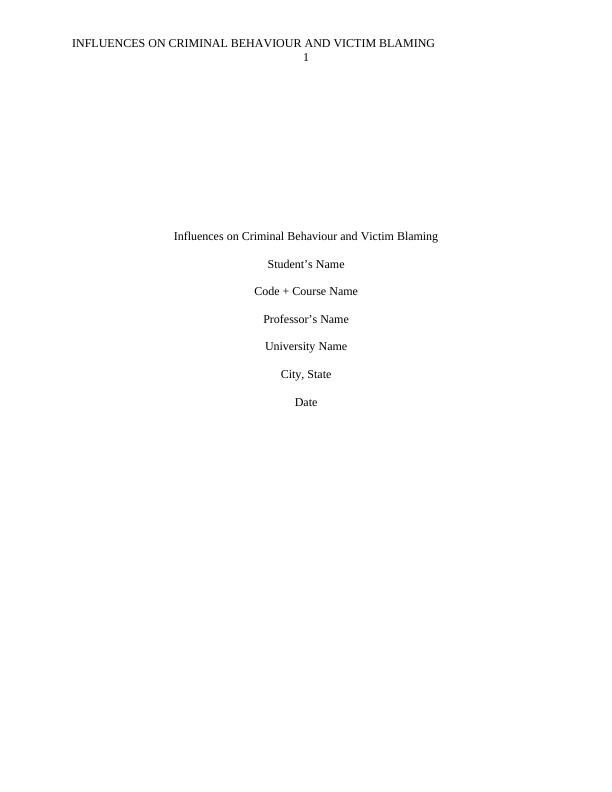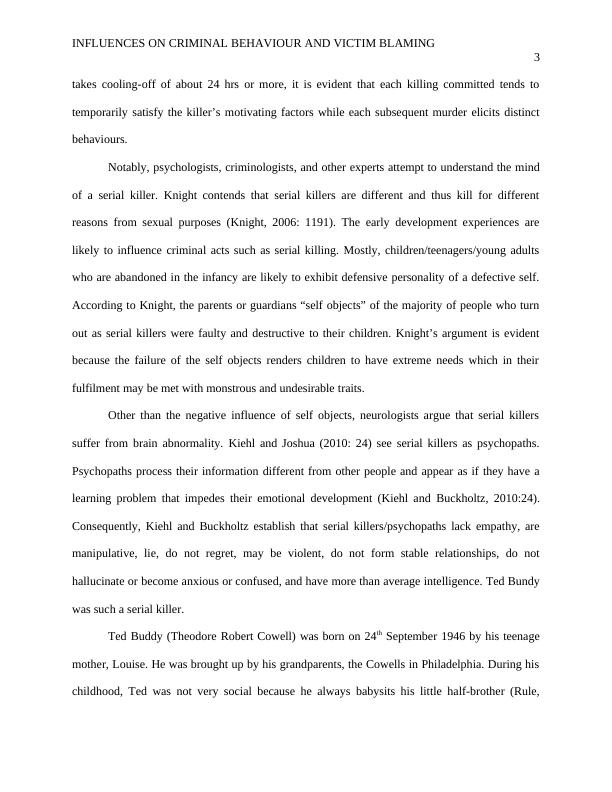Influences on Criminal Behaviour and Victim Blaming
A report to explore our understanding of criminal behaviour and the psychological concept of victim blaming.
9 Pages2241 Words2 Views
Added on 2023-01-11
About This Document
This study delves into the influences on criminal behaviour and victim blaming, focusing on the case of Ted Bundy. It explores the biological and psychological explanations for serial murder and discusses the concept of victim blaming. Gain insights into the factors that contribute to criminal acts and the societal response to them.
Influences on Criminal Behaviour and Victim Blaming
A report to explore our understanding of criminal behaviour and the psychological concept of victim blaming.
Added on 2023-01-11
ShareRelated Documents
End of preview
Want to access all the pages? Upload your documents or become a member.
The Psychology of a Serial Killer - PDF
|12
|2284
|413
Criminological Psychology Assignment Resubmission
|9
|2381
|418
Serial Killers as Heroes: Understanding the Fascination and Attraction
|7
|1829
|466



